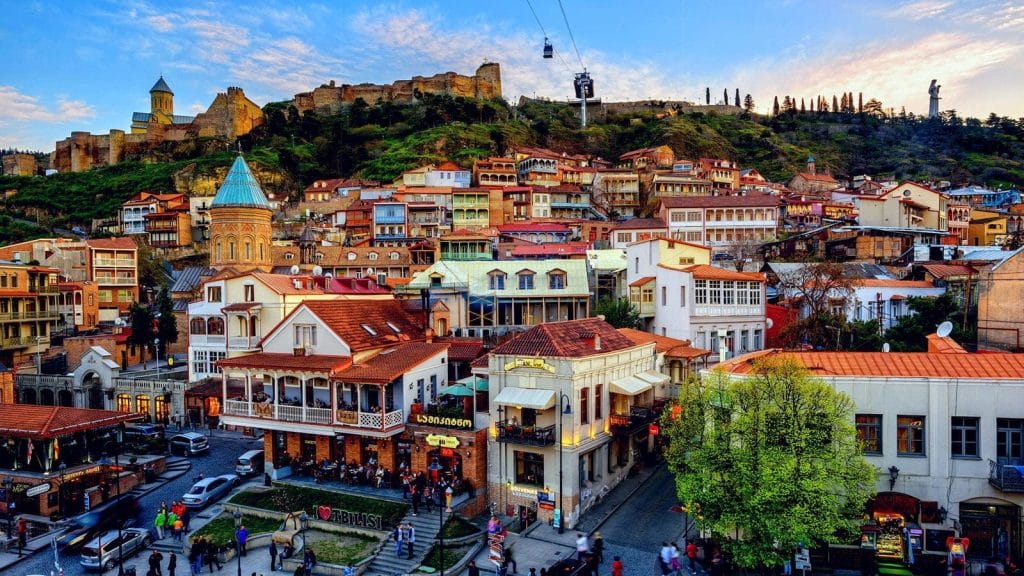1.2 million people (to say nothing of the hordes of tourists) call the roughly 500 square kilometers of Georgia’s capital home. Although it is not the country’s oldest city (that distinction goes to Kutaisi or Vani), Tbilisi is no slouch – archaeological excavations indicate a presence as early as the fourth millennium BC, and the city itself was founded in 455 AD.
Tbilisi is now a patchwork quilt of new neighborhoods, business centers, historical landmarks. According to the official division, there are over 30 districts, and who’s to say which is best? Each has its own peculiarities and character.
Much depends on the purpose of your stay: tourism, business, with family or alone, hustle and bustle or peace and quiet, personal transportation or public? This article will introduce you to the city’s most famous neighborhoods and, if possible, give you a better understanding of which are best for what.
A few words about the standard of living in Tbilisi
- Tbilisi is wealthy: It scores 91.2 points out of 100 (higher than Buenos Aires, Shanghai, Bali, Bangkok, and many other big players) in the International Wealth Index (IWI).
- The cost of living remains low. Numbeo ranks the city 153 and much cheaper than somewhere in the USA or Switzerland. Just over USD 600 is enough for one person.
- An apartment in Tbilisi costs between USD 8-15 to rent per square meter, according to Galt & Taggart in August 2024.
- Real estate costs between USD 952 to 2,658/m² to buy on average (actual prices can go up to USD 5,000/m² in central areas).
- The city is in an active building phase. Building permits were issued for more than one million m² of housing in 2024 alone (track new buildings on Korter).
- Public transportation (and infrastructure in general) is excellent, for example, 27 km of metro with two branches and 23 stations (check out the metro map here).
City Center (and Saburtalo)
Old Tbilisi, Sololaki, Mtatsminda, Avlabari, Marjanishvili, Vera, and Vake are the most touristy, historically significant, and duly crowded. Hundreds of trendy restaurants, bars, and designer stores adorn streets packed with the best hotels, museums, theaters, business offices, government agencies, and embassies bookending the everyday lives of Georgians and resident expats.
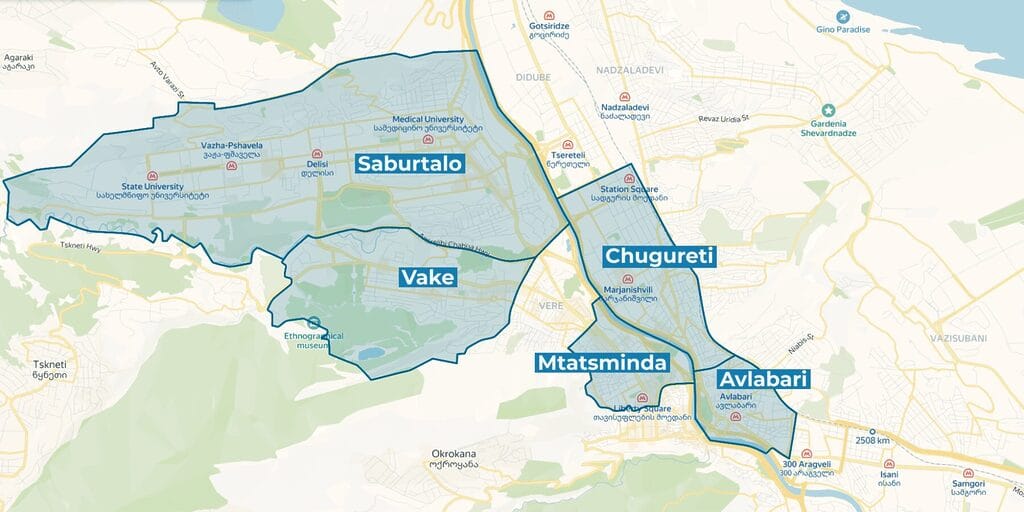
Vake cool
Vake stretches along Chavchavadze Avenue (the main district artery) and a mountain of eco-trails, Mtatsminda Park, and Turtle Lake. The center of business and entertainment, Vake is affectionately referred to by locals as ‘Manhattan’.
Ivane Javakhishvili Tbilisi State University, the country’s oldest active university, opened here at the turn of the last century, a community of creative intellectuals and scientists subsequently sprouting up around it.
In the 1950s, Stalinist neoclassicism began to pop up, shaping the district’s appearance, currently being renovated.
The metro doesn’t reach into Vake, but ground transportation (buses, electric scooters) is good. Traffic is worse here than in the parts of the city with the metro, so allow extra time when visiting.
According to Galt & Taggart, the average cost of rental housing in Vake is USD 15.4/m², with an average purchase price of USD 2,271/m². For example, the PB Property catalog has a 186 m² apartment listed for USD 380,000 – enough to qualify for an investment residence permit (to learn more about how to buy real estate remotely).
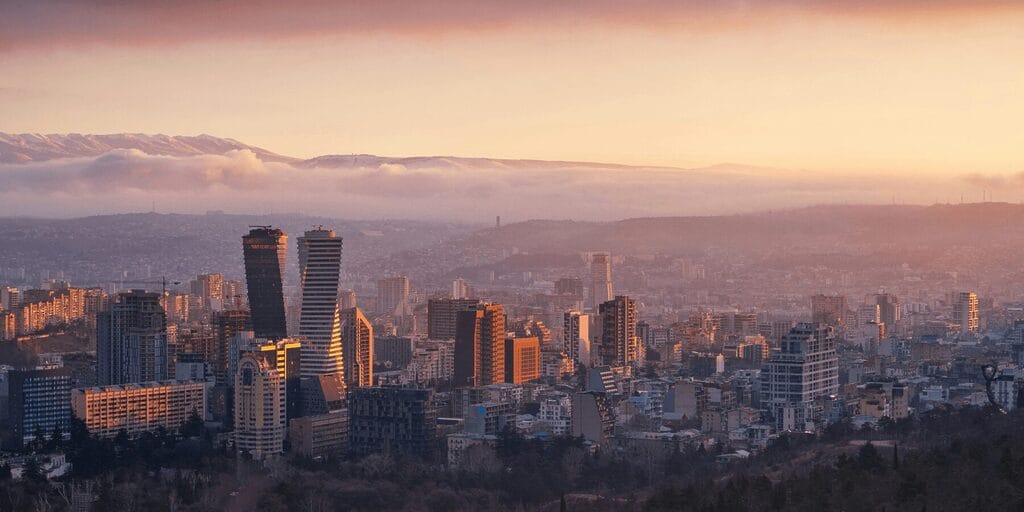
Mtatsminda for investment in the tourism sector
The steepest district of Tbilisi is located on the side of the eponymous Mtatsminda (‘holy mountain’ in Georgian) and has tourist, business, and residential value. Along Shota Rustaveli Avenue you will find the Georgian Parliament, the National Museum of Georgia, the Tbilisi Museum of Modern Art, the Alexander Griboyedov Theater (in the shopping center building on Freedom Square) and many other wonderful edifices that give the street its character.
90% of the real estate is old stock that attracts the attention of tourists, culture buffs, and cameramen (carved vaulted balconies are the calling card of Mtatsminda, just FYI). The private sector has a strong presence here too.
Life under permanent tourist siege isn’t everyone’s bag, so there is a tendency for locals to rent out apartments, with real estate agencies following suit and offering opportunities for investment in the tourist sector.
- There is considerably less new housing being built in this neighborhood so the cost per square meter is high – USD 14 to rent, 2,658 to buy.
Chugureti and Avlabari – where cultures collide
Chugureti is located around Marjanishvili Street, the center of the Middle Eastern community and close to much of Tbilisi’s nightlife (like the legendary Bassiani club, which made our must-see list).
People often come to Marjanishvili for Turkish, Iranian, or Indian cuisine, to attend a concert at the Factory, bar hop, or shop for vintage or designer clothing. There are more locals than in the Mtatsminda neighborhood, though there are plenty of tourists too staying in the inexpensive hostels, and the atmosphere is a special mix of cultures.
Chugureti’s neighbor to the south, Avlabari, is a bit of Armenia in Tbilisi and home to Sameba (Holy Trinity) Cathedral, the tallest church in Georgia and third-tallest Eastern Orthodox cathedral in the world.
Although construction in Chugureti, Avlabari, and Mtatsminda is not as active as in some other areas, the neighborhoods are growing and offer an interesting mix of architecture going back as far as the 17th century and an interesting opportunity for investment, though probably housing here would be better to rent out. In any case, the initial investment will be significantly less than in other parts of the center.
- In August 2024 real estate in Chugureti cost an average of USD 1,675/m² to buy or USD 10.3/m² to rent. Galt & Taggart doesn’t have any data on Avlabari, but it is a fair assumption that it will be even cheaper.
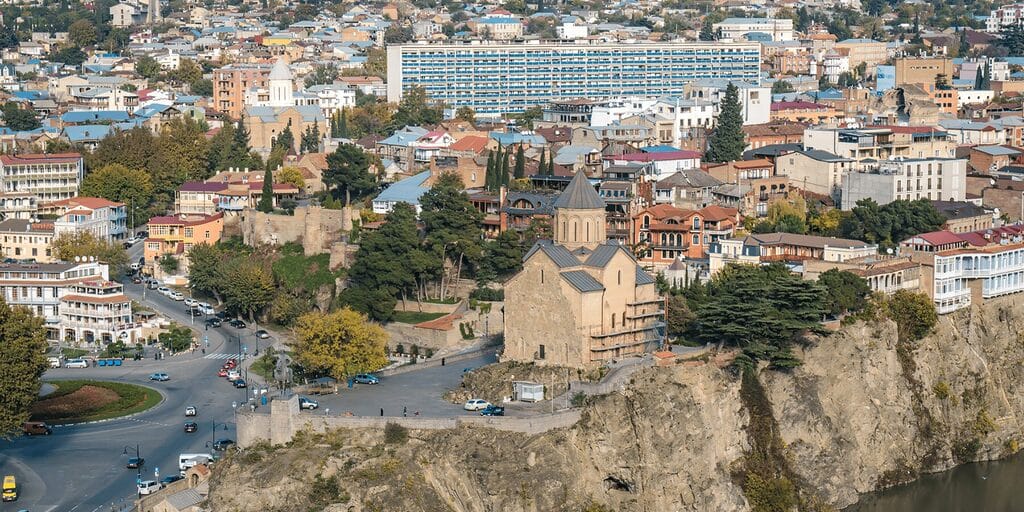
Saburtalo for families
People who come to Georgia to study or work but want to live a little further away from the crowded center love Saburtalo. It has its own metro line, well-developed transportation and shopping infrastructure, local specialty coffee shops, daycares, and schools (including schools with instruction in Russian and English), and its very own district oasis, Lake Lisi.
Saburtalo is one of the largest districts, comparable in population (and size) to Batumi. Development varies, from the Stalinist neoclassicism around Pekin Avenue and five-storey Soviet buildings to premium business class edifices.
One square meter in Saburtalo costs USD 1,539 for purchase and 11.7 for rentals. According to the Global Property Guide, a two-bedroom apartment costs EUR 800 to rent, and 60-80 m² can set you back USD 140,000-300,000.
Tbilisi southside
There are 4 major districts in the South: Isani, Samgori, Varketili, and Krtsanisi. The first three are on the left bank of the Mtkvari River, and Krtsanisi is on the right. The fast pace of housing stock renewal is affecting the architectural landscape, the rhythm of life, and the inhabitants themselves. If you haven’t got your heart set on the center, any of these districts could be a good choice for rental or purchase.
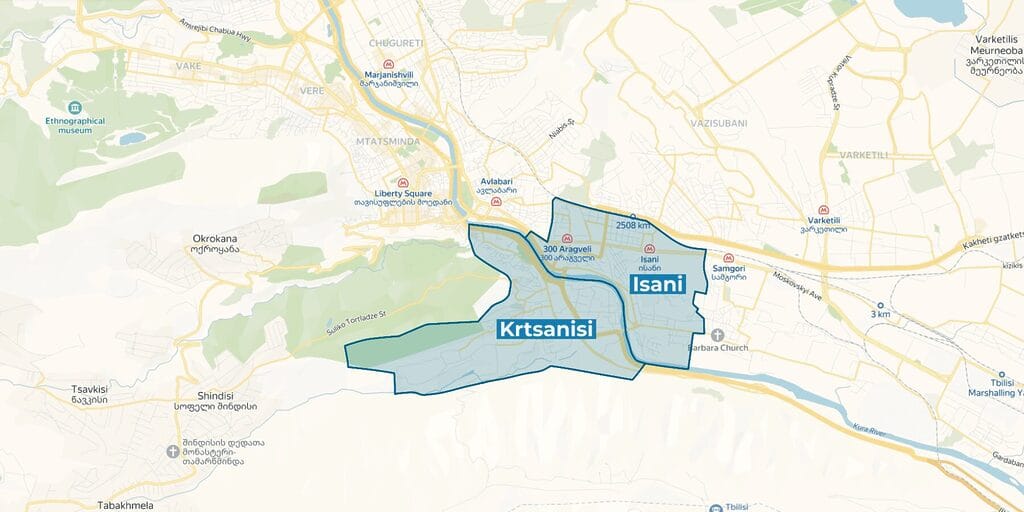
Isani – a little Saburtalo
Isani is fortuitously sandwiched between the bright, touristy Avlabari and the grittier, densely populated Samgori. Isani has a metro and well-developed public transport, and it’s just a hop, skip, and a jump from the center.
Grocery chains, schools, daycares, banks, hospitals, dentists, mobile providers, repair shops – whatever you feel like breaking, they’ll fix it for you. Developers are eager to get in while it’s reasonably affordable because, among other things, it’s a bit higher up, meaning potential for apartments with a view.
- Housing in Isani is much more affordable than downtown, at USD 1,219 to buy or just 10.3 per square meter to rent.
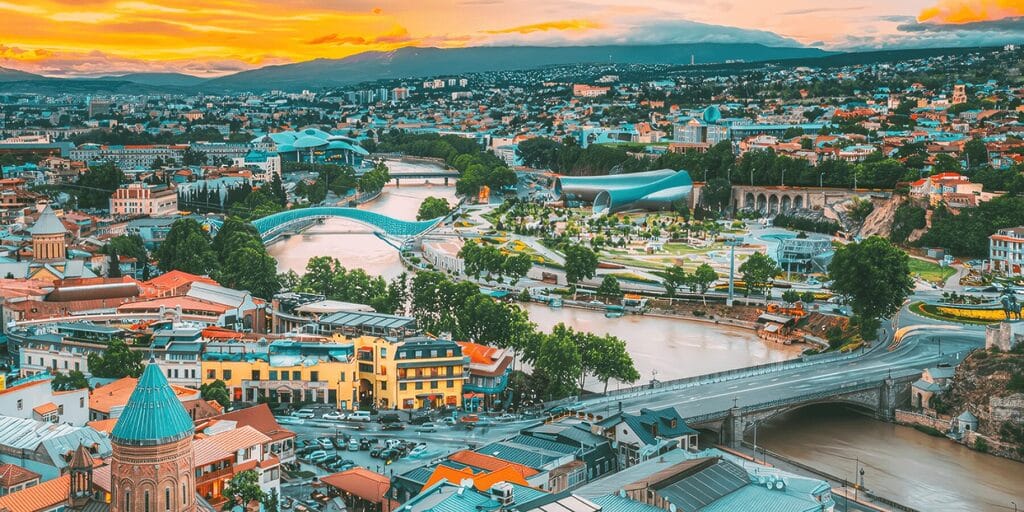
Krtsanisi – quiet, green
Bulgaria, Great Britain, Lithuania, Japan, and France, among others, have their embassies here, so it’s not uncommon to hear the babel of all the world in the surrounding streets. Krtsanisi cuts deep into the side of a tree-covered mountain, borders on the Botanical Garden, and is the city’s greenest neighborhood.
Traffic on Gorgasali Street and around the Ortachala bus station is a sight to behold, but the streets in the neighborhood itself are pretty quiet. There’s no metro, so look to buses, cabs, scooters, and strong legs.
- Low-rise residential buildings with indoor swimming pools, gyms, daycare, and co-working spaces have been popping up here in recent years. According to Galt & Taggart, Krtsanisi is the third most popular area to buy a new home, with an average price per m² of USD 1,456 or 10.8/m² to rent.
Tbilisi northside
The river divides the northside into two parts. On the right are the historical neighborhoods of Didube, Nadzaladevi, and Gldani, and on the left is Didi Digomi, new and growing fast. Each is interesting in its own way.
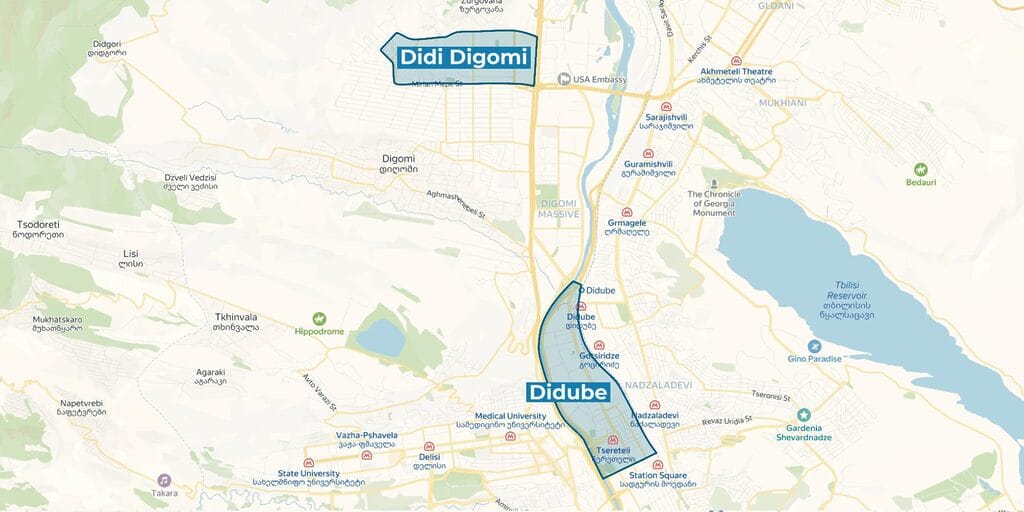
Didube – traffic with a twist
Brutalist Tbilisi at its best with bus and railway stations dispatching trains to every corner of the country, it is also home to one of the city’s main thoroughfares, Tsereteli Avenue, so be mindful of that.
Like the southside, the northside has its shopping areas, markets, and repair shops, car parts and building materials. Deserter’s Market in the heart of the district is intense and colorful. But the main attraction is probably Didube Pantheon, where many famous Georgians are buried.
- High-rise apartments are going up at Didube with an average price of USD 1,230/m², or 9.3/m² to rent. Despite the traffic and retail, the neighborhood is also considered a good spot for families with children: schools, daycares, stores, and parks abound. Tbilisi Sea is also a stone’s throw away.
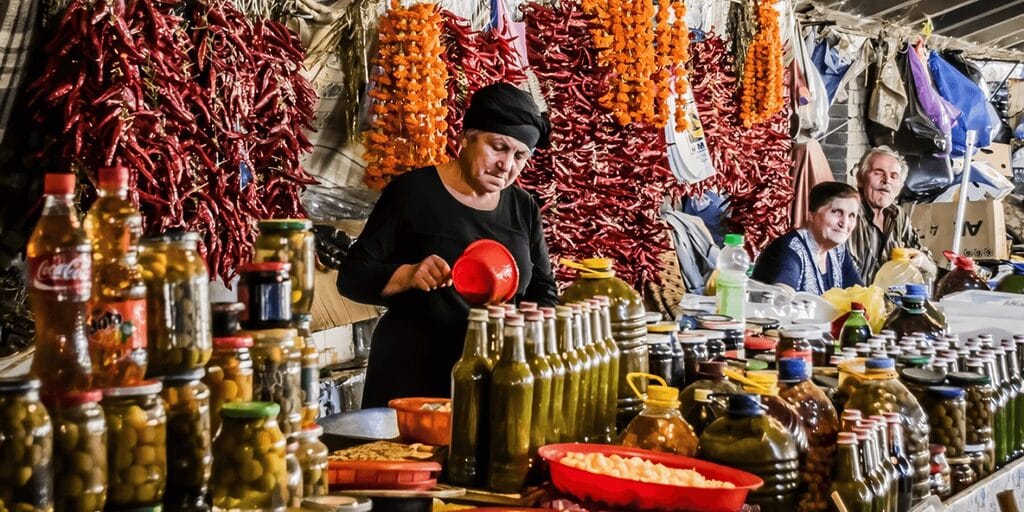
Didi Digomi – on the up and up
Didi Digomi is young and dynamic, all new buildings, a classic bedroom community. There is no subway or major thoroughfare yet, which can make travel to the center a challenge. On the other hand, the apartments have some nice views of the landscape around Tbilisi.
It’s also well located to get out of town. For example, you can easily get (by public transportation or car) to Mtskheta or Jvari Monastery, or just keep going to Borjomi, Kutaisi, or Batumi.
The National Environmental Agency of Georgia reckons Didi Digomi has some of the city’s best air (especially compared to the central districts). The cost of housing is also very attractive – about USD 1000/m².

As Tbilisi grows and changes, new public spaces and parks appear and old ones get a new lease on life. The Architecture Biennale, which sought to “correct mistakes,” just recently wrapped up, finding new ways to coexist with the environment, and in 2023, the Economic Commission for Europe (UNECE) developed a list of recommendations for the city to align urbanization with its sustainable development goals, so one can assume the best is yet to come. Don’t miss it!
PB Property will help you choose and buy property you can profit from, organize inspections, negotiate with the owner, provide essential legal support, and help with a residence permit. Book a free consultation to learn more.
